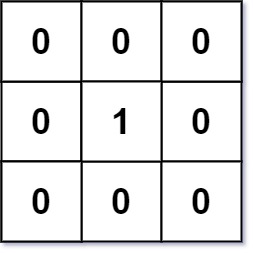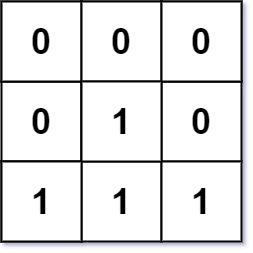Mastering the 01 Matrix Problem on LeetCode: A Detailed Guide for Aspiring Software Engineers
Dive deep into solving the 01 Matrix problem using BFS, complete with Python code and complexity analysis—perfect for acing your coding interview.
Introduction to the 01 Matrix Problem
In coding interviews, especially on platforms like LeetCode, problems that involve matrices are common as they test a candidate's ability to navigate two-dimensional data structures efficiently. The "01 Matrix" (LeetCode 542) problem is a classic example that poses a seemingly simple question: Given an m x n binary matrix where each cell can either be 0 or 1, how can you determine the distance of the nearest 0 for each cell?
The distance we're talking about is the Manhattan distance, where moving from one cell to an adjacent one (up, down, left, or right) counts as a single step. This problem not only checks your grasp of matrix operations but also your ability to implement graph traversal techniques like Breadth-First Search (BFS).
Every 1 in the matrix should be replaced with the shortest distance to a 0. Understanding and solving this efficiently is crucial for performance in real-world applications and interviews alike.
Given an
m x nbinary matrixmat, return the distance of the nearest0for each cell.The distance between two adjacent cells is
1.Example 1:
Input: mat = [[0,0,0],[0,1,0],[0,0,0]] Output: [[0,0,0],[0,1,0],[0,0,0]]Example 2:
Input: mat = [[0,0,0],[0,1,0],[1,1,1]] Output: [[0,0,0],[0,1,0],[1,2,1]]
Different Approaches to Solve the Problem
When faced with the 01 Matrix problem, several strategies might come to mind:
Naive Approach: Iterate over each cell containing 1 and for each one, perform another iteration to find the nearest 0 by checking all other cells. This brute-force approach, however, results in a prohibitive time complexity of
O((mn)^2), wheremandnare the dimensions of the matrix.Dynamic Programming: Use two passes over the matrix—one from top-left to bottom-right and another from bottom-right to top-left—to dynamically update each cell with the distance to the nearest 0. While this approach works in
O(mn)time, it can be complex to implement and understand.Breadth-First Search (BFS): The most efficient and intuitive method for this problem involves BFS. Starting from all cells that contain 0 (as these are the shortest points to themselves), propagate the distance information to their neighbors iteratively. This approach ensures that each cell is processed only once, leading to an optimal
O(mn)time complexity.
Explanation and Complexity Analysis
To solve the 01 Matrix problem effectively, BFS stands out due to its clarity and efficiency. Here’s how you can implement it:
Initialization: First, identify all cells containing 0s and set their distance to 0. Initialize a queue with these cells. All other cells are set to infinity, indicating that their distance is not yet determined.
Breadth-First Search: Dequeue an element, and for each of its four possible neighbors, check if visiting the neighbor would offer a shorter path than any previously recorded path. If so, update the neighbor’s distance and enqueue it. This propagation continues until the queue is empty.
Complexity Analysis
Time Complexity: Each cell of the matrix is processed once, leading to
O(mn).Space Complexity: The queue can potentially hold all the cells in the worst case, thus
O(mn).
Python Solution
from collections import deque
def updateMatrix(mat):
rows, cols = len(mat), len(mat[0])
dist = [[float('inf')] * cols for _ in range(rows)]
queue = deque()
# Initialize the queue with all '0' cells and set their distance to 0
for r in range(rows):
for c in range(cols):
if mat[r][c] == 0:
dist[r][c] = 0
queue.append((r, c))
# Directions array to help navigate the matrix
directions = [(-1, 0), (1, 0), (0, -1), (0, 1)]
# Process the queue
while queue:
r, c = queue.popleft()
for dr, dc in directions:
nr, nc = r + dr, c + dc
if 0 <= nr < rows and 0 <= nc < cols and dist[nr][nc] > dist[r][c] + 1:
dist[nr][nc] = dist[r][c] + 1
queue.append((nr, nc))
return dist
Conclusion
The 01 Matrix problem is an excellent exercise for software engineers preparing for coding interviews. It tests your ability to apply breadth-first search in a novel context and your understanding of matrix operations.
Mastering such problems not only prepares you for technical interviews but also improves your ability to solve problems involving graph traversal in real-world applications.

